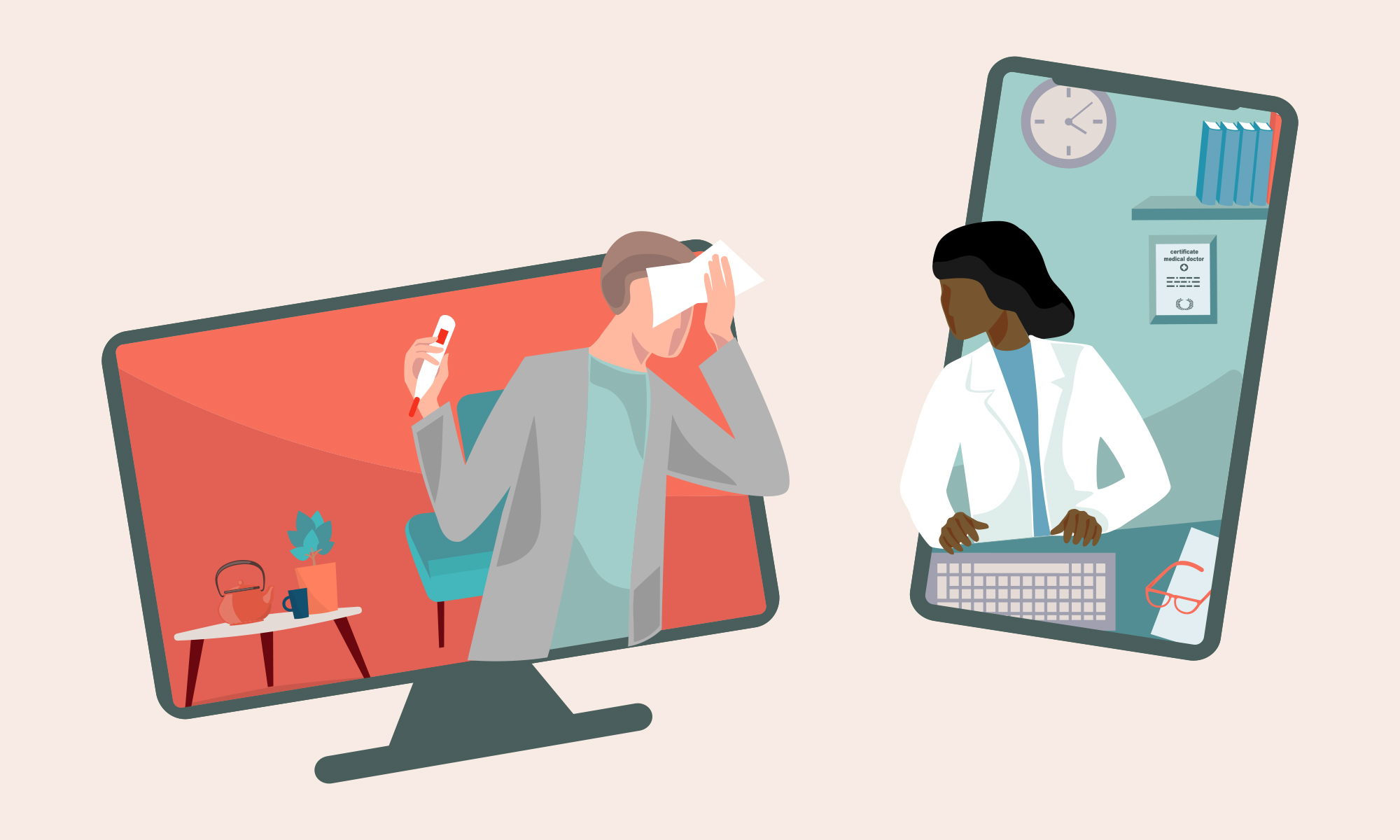Over the course of the pandemic, telemedicine has gone from a service used sparingly or in emergencies to a vital, everyday tool for health care delivery. To Maura McGuire, senior director of education and training for Johns Hopkins Community Physicians, the adoption of telemedicine by clinicians and health systems has been akin to flying a plane while building it.
“We’ve done a pretty good job, despite all the challenges,” McGuire said in her opening remarks of the Interprofessional Telemedicine Education Symposium, sponsored by Johns Hopkins Medicine and University of Maryland Medicine, with the Hopkins Business of Health Initiative. “On the other hand, we know it’s important to reflect on how we can improve, especially in team-based practice.”
Attendees at the daylong medical education webinar in March — a mix of providers, nurses, researchers and technical experts — heard from clinicians, telemedicine officials and advocates on a variety of topics, from teaching telemedicine in medical schools and improving your “webside” manner with patients to the latest telemedicine billing and coding changes.
Speakers acknowledged that while providers have integrated virtual health care into their practices to varying degrees, regular use of telemedicine is here to stay.
“The technology is here, and we have been afforded the responsibility, the mission, the headache, the challenge and the opportunity to manage its incorporation into the fabric of what we do,” said David Stewart, an associate professor of family medicine at the University of Maryland.
Before the pandemic, Johns Hopkins Medicine had 50–80 telehealth visits per month. But in March 2020, at the onset of the pandemic, telehealth visits shot up to 25,000, according to Brian Hasselfeld, medical director for digital health and telemedicine. One month later, visits jumped to nearly 90,000. By the last half of 2021, in-person care had returned, but approximately one-fifth of the 240,000 ambulatory care visits to Johns Hopkins across all specialties each month remained via telemedicine. In addition to mental and behavioral health, other specialty areas such as neurosurgery and critical care medicine were among the top departments, he said, with lots of pre-op and post-op assessment being done remotely.
“When we think about issues to be solved and education in telemedicine, it is truly across the care continuum across all specialties,” he said.
The move to telemedicine has impacted workforce attitudes, Hasselfeld noted. In a Johns Hopkins Medicine survey of 1,300 providers, two-thirds said they would prefer to conduct telemedicine from their homes assuming they had the appropriate equipment.
“This really does drive home the fact that providers are finding work-life balance with telemedicine thanks to the ability to conduct clinical care from any location,” Hasselfeld said. “This will have a lot of regulatory impact around provider enrollment and workforce planning and staffing issues.”
Hasselfeld and other speakers acknowledged there are generational, economic and digital literacy barriers to telemedicine that need to be addressed to make the system more equitable. But if there is a fundamental shift in how medicine is practiced, another challenge will be making telemedicine as easy for users as ordering items from an online retailer or posting to social media.
“I think the biggest issue we are going to face in the coming years is how to make our telehealth delivery platforms much more accessible,” said Anthony Roggio, medical director of telehealth for the University of Maryland. “Whether patients want to interact with us that way is going to be highly dependent on how easy it is to get our technology to be user-friendly. Our platforms used for telehealth need to be integrated with our electronic health records, and they need to be easy to navigate for providers and especially easy to navigate for patients.”
The reliance on electronic medical records and online messaging for virtual visits makes practitioner collaboration critical to ensure patients get the best care possible, said Bryan Barshick, senior director of nursing for ambulatory services at Johns Hopkins.
“Care does not end with clinic visits. Instead, we need to be prepared to help manage all the activities that both directly and indirectly impact the patient,” he said. “Most importantly, we need to keep the patient experience and patient needs the center of everything we do.”
Keisha Mullings-Smith, director of patient experience at Johns Hopkins, said that at the start of the pandemic patients were thankful for being able to get health care services at home without risking outside exposure to the coronavirus. She has since observed that virtual visits have made patients more comfortable with their providers because they might be in their living room instead of an exam room, and said that the proliferation of telemedicine may encourage others to get treatment.
“I will be curious to learn, as we go along, how many of our patients will no longer see that white coat blood pressure reading [in a clinical setting] and that anxiety that comes with it,” she said.



